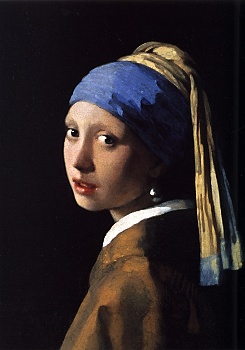
Om Forum for
matematiske perler (og kuriositeter)
2001/2002 ·
2002/2003 ·
2003/2004 ·
2004/2005 ·
2005/2006 ·
2006/2007 ·
2007/2008 ·
2008/2009 ·
2009/2010 ·
2010/2011 ·
2011/2012 ·
2012/2013 ·
2013/2014 ·
2014/2015 ·
2015/2016 ·
2016/2017 ·
2017/2018 ·
2018/2019 ·
2019/2020 ·
2020/2021 ·
2021/2022 ·
2022→.
Grothendieck is considered as one of the most influential mathematicians in the 20th century. Although he traveled (and sometimes with obvious problems) with a Nansen passport issued by the United Nations, he was a pure French scientific product. Reacting to his death, November 13th, President Hollande hailed him as “one of our greatest mathematicians and an out-of-the-ordinary personality in the philosophy of life”. He was a son of a Russian Jewish revolutionary, Alexander Shapiro, who finished his days in Auschwitz, and a German mother, Hanka Grothendieck, with an amazing history of her own. Alexander Grothendieck came to Paris in 1939, to join his father and mother. They had left him with a Lutheran pastor in Germany in 1933 when Hitler came to power, and they had to flee. His mother died soon after the war, and Alexander had to take care of himself barely 16 years old. He studied at the Universities in Montpellier and Nancy, and came back to Paris in 1955, after having completed a Ph.D. thesis in Nancy that made his name well known.
I met him in the fall of 1957, and again in 60–62. As a member of a small group of unofficial assistants, I had the fascinating opportunity to see him at work, having the job of typing and putting together the notes we took of the lectures.
I shall give a short review of Grothendieck's mathematical legacy, including his reworking of algebraic geometry, follow him through his work for Peace and Justice, via a very complicated period in the early 1970's, until his non-standard mental breakdown, and subsequent isolation, in a little village in the Pyrenees, where he hid and died.
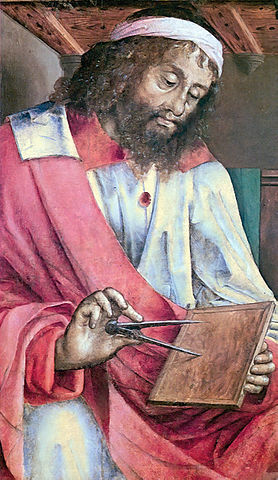
The best motto for this talk is: “Zusammengstohlen von Verschiedenem diesem und jenem” (roughly: “A motley collection of stolen items”). (The statement is attributed to none other than Ludwig van Beethoven!)
We will give a sweeping and panoramic survey of a vast topic, to wit, (plane) geometry from Euclid (~300 BC) to Hilbert (1862–1943). Euclid's influence in mathematics goes well beyond the confines of Euclidean geometry. This is for example reflected in how his five postulates (or axioms) – the 5th being the famous parallel postulate – can be partially adopted, as Hilbert suggested, to give interesting geometries. For example, Euclid's postulates number one and two yield so-called “ordered geometry” which, in spite of its apparent meager structure, contains non-trivial results. On the other hand, Euclid's first and fifth postulates (together with the Desarguan property) yield “affine geometry” over a field, thus linking it to Descartes' method of coordinates. Euclid's four first postulates yield so-called “neutral geometry”, which contains both Euclidean geometry (including ruler and compass constructions) and hyperbolic geometry.
Finally we address Cayley's famous dictum from 1859: “Projective geometry is all geometry”, subordinating Euclidean geometry (and other geometries) to projective geometry. We explain in a few words why Cayley is absolutely correct, the key being his introduction of an imaginary absolute (sic!) in projective geometry.
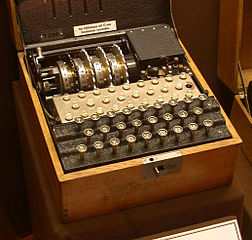
Alan Turing was one of our great 20th century mathematicians, and a pioneer of computer science. However, he may best be remembered as one of the leading code breakers of Bletchley Park during World War II. It was Turing's brilliant insights and mathematical mind that helped to break Enigma, the apparently unbreakable code used by the German military. We present a history of both Alan Turing and the Enigma, leading up to this fascinating battle of man against machine.
Dr James Grime is a mathematician and public speaker. He can be mostly found touring the UK, and the world, giving talks about the history and mathematics of codes and code breaking.
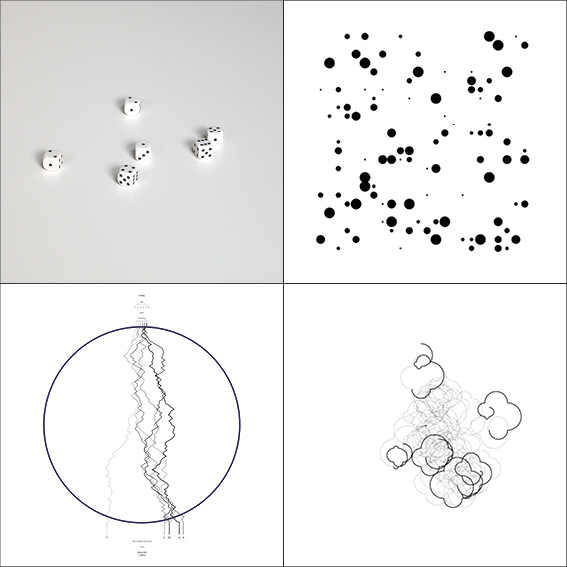
I 1994 ble prosjektet «ett og etthundre terningkast om dagen» påbegynt – et kunstprosjekt som fortsatt pågår, 20 år etter. Seks terninger kastes samtidig. Hver terning er merket og har sin faste plass i rekkefølgen. På denne måten beholdes det rent tilfeldige ved materialet når tallrekkene skrives ned. Tallmaterialet samles i et stadig voksende arkiv og danner grunnlag for videre transformasjoner til ulike visuelle former og uttrykk. Denne unike tallsamlingen er mitt kunstneriske grunnmateriale.
Tallrekkene, som er resultat av et samspill mellom tilfeldigheter og systemer, utgjør et relativt nøytralt og på samme tid uavhengig og autonomt materiale. Det veksler og varierer mellom seks ulike enheter, og kombinasjonsmulighetene er nærmest uendelige. Gjennom ulike kunstneriske transformasjoner blir tallmaterialet gitt visuell form. Man kan der oppleve en form for natur, med figurer og rytmer. Man kan se på materialet som en organisme eller materie, noe levende med sin egen måte å være på – med egne konkrete og latente egenskaper og med ulike kvaliteter som kommer til syne når det tar form som bilde, objekt, bevegelse, lyd mm.
Jeg står i en pågående dialog med dette spesielle materialet, og foredraget vil ta dere med på min reise inn i prosjektet; tanker bak og erfaringer gjort i utviklingen av et utvalg delprosjekter. Det vil bli vist hvordan transformasjonene resulterer i ulike visuelle former og uttrykk ved bruk av ulike tegn og regler – og på den måten synliggjør og lar oss erfare noe av tilfeldighetens indre natur og mangfoldige vesen. Det vil også bli litt ren tallfakta og gitt en kort introduksjon til noen sentrale kunstnere fra den tidlige konseptkunsten, den kunstneriske tradisjonen dette prosjektet står i forhold til og søker å utvikle videre.
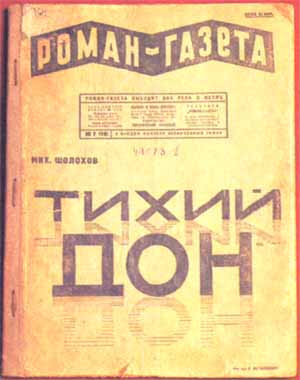
Nobelprisen i litteratur 1965 tilfalt Mikhail Sjolokhov for den episke fortellingen Stille flyter Don, som via kosakkenes mangfoldige liv også skilder starten av sovjetsamveldets epoke. Sjolokhov var en heltenes helt på sin store hjemmebane, utgitt i flere enn tusen utgaver i Russland alene, innvalgt i det øverste sovjet, i vitenskapsakademiet og i sentralkomiteen, osv. Men i 1974 ble det gitt ut en bok i Paris, som hevdet at hele Don-manuskriptet var tatt fra en annen forfatter, nemlig Fjodor Kriukov, som kjempet mot bolsjevismen og døde i 1920. Boken ble gitt ekstra vekt og krutt ved et flammende forord av Solzhenitsyn, nobelprisvinneren fra 1980, der han gir full støtte til bokens konklusjon. Er dette litteraturhistoriens største plagiatskandale? Jeg skal gi en statistisk analyse av dette spørsmålet, basert på tre tekstkorpora: Tekster garantert skrevet av Sjolokhov, tekster tilsvarende fra Kriukovs hånd, samt stridens eple, de fire bindene om den ikke helt stilleflytende Don.
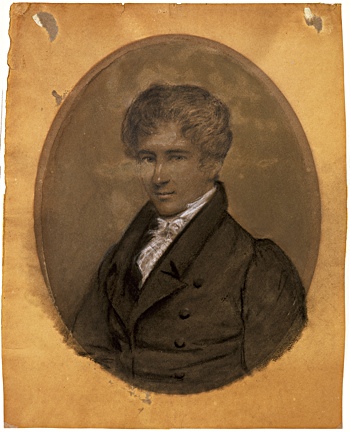
Earlier this year Helge Holden gave a talk at various places with the intriguing title: “Would Abel have been a recipient of the Abel Prize in mathematics?”. Not surprisingly his answer was a resounding “yes”.
We carry this “gedanken” scenario one step further by conducting an imaginary interview with Abel. The interview will follow the pattern that has been established by the twelve interviews held so far with the present Abel Prize recipients. We have chosen the date February 6, 1829 for the interview, and the location is “Bukkerommet” at Froland Verk in Aust-Agder. Abel had celebrated Christmas and taken part in the New Year's festivities at Froland Verk, where his fiancée was a governess. At the time of the interview he had been bedridden for about a month after he had been struck down with pneumonia, the underlying tuberculosis making this fatal. However, at the end of January / beginning of February, he had recuperated from the pneumonia and the fever was gone. We know from reliable sources – those that looked after him – that Abel at the time, though weak, was optimistic about the future and thought that he would recover and get well again. (Alas, we know that this was a mirage – the tuberculosis killed him and he died exactly two months after our imaginary interview.)
In the interview you will hear the authentic voice of Abel. We have been careful not to ascribe anything to Abel which he himself has not written either in his letters or his mathematical notebooks, or which cannot be found in his mathematical manuscripts, published or not. We have expanded on certain of his answers, but only if we have strong indications that this is what he meant or had in mind. To enliven the interview, we use geometric figures and/or formulas for illustration, in these parts of the interview that deals with Abel's mathematical discoveries.
As we do when we prepare for interviews with present Abel Prize recipients – contacting people that know these recipients – we similarly have contacted people that know Abel or who have expressed opinions about him and his achievements, notably Holmboe, Degen, Crelle, Legendre, Jacobi, Bessel and Gauss. (However, as part of our imaginary set-up we assumed that these people could be contacted with 21st century speed, not by slow mail of the 1820's!).